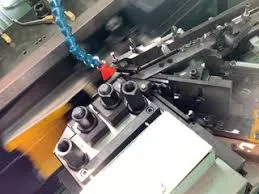
-
 Afrikaans
Afrikaans -
 Albanian
Albanian -
 Amharic
Amharic -
 Arabic
Arabic -
 Armenian
Armenian -
 Azerbaijani
Azerbaijani -
 Basque
Basque -
 Belarusian
Belarusian -
 Bengali
Bengali -
 Bosnian
Bosnian -
 Bulgarian
Bulgarian -
 Catalan
Catalan -
 Cebuano
Cebuano -
 Corsican
Corsican -
 Croatian
Croatian -
 Czech
Czech -
 Danish
Danish -
 Dutch
Dutch -
 English
English -
 Esperanto
Esperanto -
 Estonian
Estonian -
 Finnish
Finnish -
 French
French -
 Frisian
Frisian -
 Galician
Galician -
 Georgian
Georgian -
 German
German -
 Greek
Greek -
 Gujarati
Gujarati -
 Haitian Creole
Haitian Creole -
 hausa
hausa -
 hawaiian
hawaiian -
 Hebrew
Hebrew -
 Hindi
Hindi -
 Miao
Miao -
 Hungarian
Hungarian -
 Icelandic
Icelandic -
 igbo
igbo -
 Indonesian
Indonesian -
 irish
irish -
 Italian
Italian -
 Japanese
Japanese -
 Javanese
Javanese -
 Kannada
Kannada -
 kazakh
kazakh -
 Khmer
Khmer -
 Rwandese
Rwandese -
 Korean
Korean -
 Kurdish
Kurdish -
 Kyrgyz
Kyrgyz -
 Lao
Lao -
 Latin
Latin -
 Latvian
Latvian -
 Lithuanian
Lithuanian -
 Luxembourgish
Luxembourgish -
 Macedonian
Macedonian -
 Malgashi
Malgashi -
 Malay
Malay -
 Malayalam
Malayalam -
 Maltese
Maltese -
 Maori
Maori -
 Marathi
Marathi -
 Mongolian
Mongolian -
 Myanmar
Myanmar -
 Nepali
Nepali -
 Norwegian
Norwegian -
 Norwegian
Norwegian -
 Occitan
Occitan -
 Pashto
Pashto -
 Persian
Persian -
 Polish
Polish -
 Portuguese
Portuguese -
 Punjabi
Punjabi -
 Romanian
Romanian -
 Russian
Russian -
 Samoan
Samoan -
 Scottish Gaelic
Scottish Gaelic -
 Serbian
Serbian -
 Sesotho
Sesotho -
 Shona
Shona -
 Sindhi
Sindhi -
 Sinhala
Sinhala -
 Slovak
Slovak -
 Slovenian
Slovenian -
 Somali
Somali -
 Spanish
Spanish -
 Sundanese
Sundanese -
 Swahili
Swahili -
 Swedish
Swedish -
 Tagalog
Tagalog -
 Tajik
Tajik -
 Tamil
Tamil -
 Tatar
Tatar -
 Telugu
Telugu -
 Thai
Thai -
 Turkish
Turkish -
 Turkmen
Turkmen -
 Ukrainian
Ukrainian -
 Urdu
Urdu -
 Uighur
Uighur -
 Uzbek
Uzbek -
 Vietnamese
Vietnamese -
 Welsh
Welsh -
 Bantu
Bantu -
 Yiddish
Yiddish -
 Yoruba
Yoruba -
 Zulu
Zulu
Setup Guide for OEM Thread Rolling Machines and Their Optimal Configuration
OEM Thread Rolling Machine Setup A Comprehensive Guide
Setting up an Original Equipment Manufacturer (OEM) thread rolling machine is a critical process that ensures precision, efficiency, and consistency in the production of threaded components. Thread rolling is a metalworking process that forms threads through deformation rather than cutting, leading to stronger threads and reduced material waste. Proper setup of the rolling machine is vital for achieving optimal results.
Understanding the Components
Before diving into the setup process, it is essential to familiarize yourself with the key components of a thread rolling machine. The primary parts include the rollers, drive mechanism, feed system, and control panel. Rollers are typically made of hardened steel and are designed to shape the material as it passes through. The drive mechanism powers the rollers, while the feed system ensures a smooth and consistent feed of the workpiece into the machine.
Preparation Steps
1. Machine Inspection Begin by inspecting the thread rolling machine for any signs of wear or damage. Check the rollers, bearings, and drive components to ensure they are in good condition. Replace any worn parts before proceeding.
2. Workpiece Material Selection Choose the appropriate material for threading. Common materials include steel, aluminum, and brass. Ensure that the material meets the specifications required for your application.
3. Adjusting Roller Settings Set the roller configurations based on the desired thread specifications. This includes the diameter, pitch, and depth of the threads. Use the manufacturer’s guidelines to adjust the roller settings accurately.
oem thread rolling machine setup

4. Setting the Feed Mechanism Adjust the feed mechanism to control the speed and direction of the workpiece. The feed rate should be aligned with the machine’s capabilities and the type of material being used.
Execution of the Rolling Process
Once the machine is set up, it’s time to execute the rolling process. Begin by running a test piece to ensure the thread dimensions and quality meet the required standards. Monitor the process closely to identify any potential issues, such as excessive wear or misalignment.
Quality Control and Maintenance
After completing the thread rolling, conduct a thorough quality control inspection of the threaded components. Use appropriate measuring tools to verify the diameter, pitch, and overall quality of the threads. Regular maintenance is crucial to ensure the longevity and efficiency of the machine. Schedule routine checks and cleaning, and keep a record of any adjustments made during the rolling process.
Conclusion
Setting up an OEM thread rolling machine requires careful attention to detail and adherence to established protocols. By following the steps outlined above, manufacturers can ensure the production of high-quality threaded components that meet industry standards. With proper setup and maintenance, thread rolling machines can provide efficient and reliable performance in various manufacturing applications.
